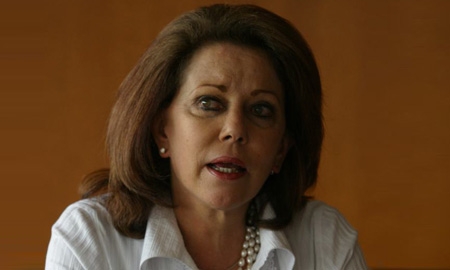Colombia’s economy grew 4% last year, 0.2% more than was expected. Its financial sector registered 39.7 billion Colombian pesos in profit, while financial institutions in Europe and North America are still struggling with the effects from the 2008 crisis.
Dr. María Mercedes Cuéllar López, President of Asobancaria (Colombia’s financial sector guild), explains what this means for Colombia and other Latin American nations. “In a way, the terms in which we trade with the industrialized world have changed. A new and bigger space has been won, something absolutely new for these countries,” she says.
The book The Day After Tomorrow: A Handbook on the Future of Economic Policy in the Developing World, had already warned a few years ago that this was going to be the next global trend. Because third world countries were already becoming a new engine of global growth, they projected that, as a group, their economic size would surpass that of their developed peers by 2015. Dr. Cuéllar confirms it: “Developing countries in Asia, Africa and Latin America went from representing 30% of global production, to representing about 50%.”
For Asobanacaria’s president, the evidence of this growth is visible even when walking down many streets in Colombia, Brazil or Chile, for example, adding, “I imagine the same happens in certain countries in Africa.” She explains that wealth has increased in the last few years “and in Colombia that growth has come hand in hand with a significant reduction of poverty and inequality.”
The financial sector has also seen good times lately as a direct result of the country’s general growth. Dr. Cuéllar says that “these opportunities have made it possible for Colombia to start investing abroad. We have invested in all of South America, but we have been particularly aggressive in Panama and Central America, where Colombian banks represent an important percentage of banking institutions.”
She emphasizes the importance of that fact: five years ago, commercial and financial relations with those countries were practically nonexistent.
The financial sector’s strength has a historical explanation. Colombia went through a terrible crisis in 1999 – something like the one that hit in 2008 – and after struggling, it came out stronger and more solid.
“It was tough. The country’s production went down 4%, an atrocity, and unemployment increased up to 25%,” says Dr. Cuéllar in an attempt to better explain the extent of the 1999 crisis. The government reacted to it by creating new and very conservative regulations. In a way, Colombia went through the 2008 crisis with considerable ease because they had already survived something similar.
Another achievement of the Colombian financial sector has been the notorious rise in accessibility to banking services. The strategies used in the last six years have made it possible for over 7.2 million Colombians to access the country’s financial sector.
“I believe Colombia has lived through a revolution in terms of financial inclusion. The sector used to be focused on corporative banking and personal banking wasn’t relevant at all,” explains Dr. Cuéllar. “That changed about six years ago: banks dedicated themselves to becoming stronger so they could attend to the Colombian people’s needs. They reached the lowest social strata, which had never been reached before.”
Because of the huge amount of drug trafficking activity in Colombia in the past, it was very hard to join the banking system. Colombian regulations around money laundering are unbending, and that meant that it made it hard for anyone to simply open a bank account.
“They would ask you for all sorts of papers and do follow-up checks on everyone,” explains Dr. Cuéllar. So one of the things that has truly helped people have access to banking services is that the process has been made much simpler. “Today you can open a bank account from your cellphone and with your ID. This has made it possible for over 5 million people to open savings accounts in four years,” she adds.

0 COMMENTS